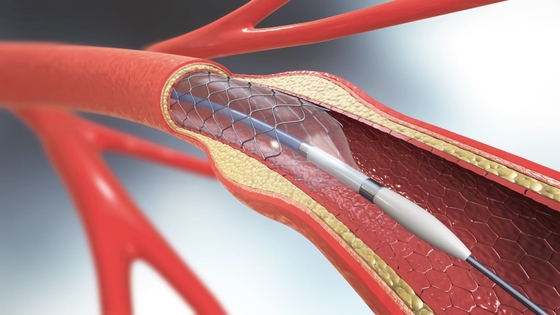Permanent Pacemaker (PPM)
A small, battery-powered device that is fitted under the skin of your upper chest.
Key takeaways
3 min read
- Different types of battery-powered pacemakers send continual electrical signals to the chambers of your heart to keep it in a regular rhythm.
- You could be a candidate for a pacemaker if your heart beats too fast or slow, is irregular, or if your heartbeat makes you feel unwell.
- Living with a pacemaker requires regular monitoring by your doctor.
What is a permanent pacemaker or PPM?
A permanent pacemaker (PPM) is a small device that is inserted under the skin of your chest to help the heart beat in a regular rhythm.
PPMs have two parts: a small battery-powered pacemaker and leads that are connected to your heart. It sits under the skin on the left or right side of your upper chest. The pacemaker sends electrical signals to your heart to keep it pumping at a normal rate.
Types of permanent pacemakers
The major types of artificial cardiac pacemakers are:
Single chamber – the electrical signal is sent to one chamber of the heart, usually the ventricles
Dual chamber – the electrical signal can be sent to two heart chambers, usually a top (atrium) and bottom chamber (ventricle), and
Bi-ventricular pacemaker – the electrical signal can be sent to three chambers. The two sides of the bottom chambers (ventricles) can be sent an electrical signal to make them pump together. This pacemaker is used to treat heart failure.
What is the difference between a pacemaker (PPM) and an implantable cardioverter defibrillator (ICD)?
A pacemaker and an implantable cardioverter defibrillator (ICD) perform different functions, but both are devices with a battery and leads that go into the heart. A pacemaker sends a regular, electrical signal to make the heart beat, while an ICD sends an electrical shock to the heart to reset an abnormal heart rhythm in an emergency.
Your doctor can tell you whether you have a pacemaker inserted or if it also has an ICD function. Read more about ICDs here.
Why do I need a pacemaker?
Your doctor may recommend a pacemaker if your heartbeat is:
Too fast
Too slow
Irregular or uncoordinated, and/or
Making you feel unwell.
A healthy heart has a steady, regular rhythm, but in some people this rhythm can be disrupted. This condition is called arrhythmia. Arrhythmias can have many types and causes, and a PPM is not needed for all arrhythmias. Your doctor will consider the type of arrhythmia you have, how it makes you feel, and any health problems you might have before deciding if you need a PPM.
How to prepare for a pacemaker insertion
Your doctor or hospital staff will give you complete instructions on how to prepare for your PPM insertion.
Before the operation
Before having your PPM inserted, there are some things you’ll need to do to prepare:
Ask your doctor if you are able to take your usual medications, such as diabetes medications and blood thinners
Plan your transport home – you’ll need to find someone who can collect you from the hospital and help you get home when it’s time to leave the hospital
Pack some essential items for an overnight stay (such as slippers, pyjamas, toiletries, phone charger)
Shower using a special surgical wash before your procedure if directed to do so – your doctor will recommend one for you and explain how and when to use it
Do not eat or drink anything before your surgery – your doctor will tell you how long before the operation you need to fast
Remove any jewellery.
During the operation
The operation to insert a PPM happens in a special operating theatre. It usually takes one to three hours.
Before it begins, hospital staff may attach you to heart monitors and insert a type of tube called a cannula into a vein in your arm to deliver fluids and medicines to your body.
Once the surgery begins, your doctor will:
Give you a local anaesthetic to reduce the feeling in your collarbone area
Make a small cut near your collarbone that creates a pocket under the skin for the pacemaker
Thread the pacemaker leads inside a large vein on the right side of your heart
Use tiny screws to fix the end of the leads into position inside the heart
Program the PPM and do some tests to make sure it is working properly
Tuck the PPM inside the pocket under your skin
Close the incision using stitches and apply a dressing to the area.
There are many different types of PPMs. The decision about which device to use will be made before the operation, in discussion between you and your heart doctor.
After the operation
Once your pacemaker surgery is finished, you will be moved to the recovery area or the ward to rest. You’ll have a special dressing over the area that was cut open. It’s important you don’t change this until someone tells you. Your doctor will give you specific instructions for managing the wound. This area might feel sore, and there could be some bruising, but this should go away after a few weeks.
Hospital staff will keep an eye on the electrical activity of your heart overnight. Often your PPM will also be checked by a technician. In most cases, you should be able to go home within 24 to 48 hours.
You will be given information about the things you can and can’t do while you are recovering from your operation. This could include things like not wearing certain clothes that will put pressure on your wound, and not lifting anything heavy, such as a full laundry basket.
Living with a pacemaker
After your PPM has been inserted, you will be able to see a slight bulge under the skin. It is important to follow your doctor’s advice about medications and any recommended lifestyle changes. Also, if you have any concerns at all after your surgery, make an appointment with your doctor.
You’ll need to go to a pacemaker clinic for regular follow-up appointments. Your medical team will give you the contact information before you leave hospital.
Discover Kim’s experience living with a pacemaker
What is a device check?
It is important to check the electrical function of your heart, your PPM’s settings, and its battery life. These checks do not require surgery. If the check is done in a clinic, the doctor will put a wireless wand on top of your skin to do this. Some PPMs will let your doctor use Bluetooth to check your device while you are at home.
How long does the pacemaker battery last?
The battery life of a PPM is five to 15 years. Your doctor will let you know how many years the battery has left at your device checks. Don’t worry, your doctor will not wait for the battery to be completely used up before changing it. A battery change is a faster procedure than inserting a PPM.
What do I have to do differently, now that I have a pacemaker?
It’s quite natural to think a lot about any precautions you may need to take, now that you have a PPM. Your heart doctor will be your best source of advice, but in general, some things to consider when living with a PPM include:
Going to your device checks
Carrying your ID card with your PPM details in your wallet or purse – it’s also a good idea to take a photo of your ID card and leave it with a family member
Making sure that all health professionals you see know that you have a PPM, in case you need specific care or instructions. This includes dentists and people giving you medical tests – for an MRI, let staff know that you have a PPM before you get to the appointment
As a general precaution, trying not to carry your mobile phone in your shirt pocket or have it very close to your PPM
And, when:
Travelling: tell airport security you have a pacemaker, as your PPM will probably make the security scanners beep – they will then use a manual wand to check you
Working: talk to your doctor if your job involves welding or electricity generators. Commercial drivers or people who operate heavy machinery should discuss the impact of a PPM on your work life
Playing sport: in general, most sports and activities shouldn’t be a problem with a PPM, but it is a good idea to talk about your activities with your doctor, especially for high contact sports where you might experience pressure or blows to your chest
Lastly, a pacemaker should not interrupt your sex life.
For more information about a permanent pacemaker procedure, speak to your doctor, nurse or health worker.
References
- Olshansky B. Patient education: Pacemaker (Beyond the basics). Accessed 20th February, 2024. https://www.uptodate.com/contents/pacemakers-beyond-the-basics
- Goldberger Z, Lampert R. Implantable Cardioverter-DefibrillatorsExpanding Indications and Technologies. JAMA. 2006;295(7):809-818. doi:10.1001/jama.295.7.809
You might also be interested in...

Mental health and heart disease
Having a mental health condition can have a negative impact on your heart health and increase your risk of heart disease.

Heart procedures and devices
If you have a heart condition, your doctor may recommend different treatments, including procedures or devices.
.jpg?width=560&height=auto&format=pjpg&auto=webp)
Heart attack recovery – quit smoking
Smoking is a major risk factor for heart disease. Get the facts on quitting and how it can help you recover.
Last updated20 February 2024